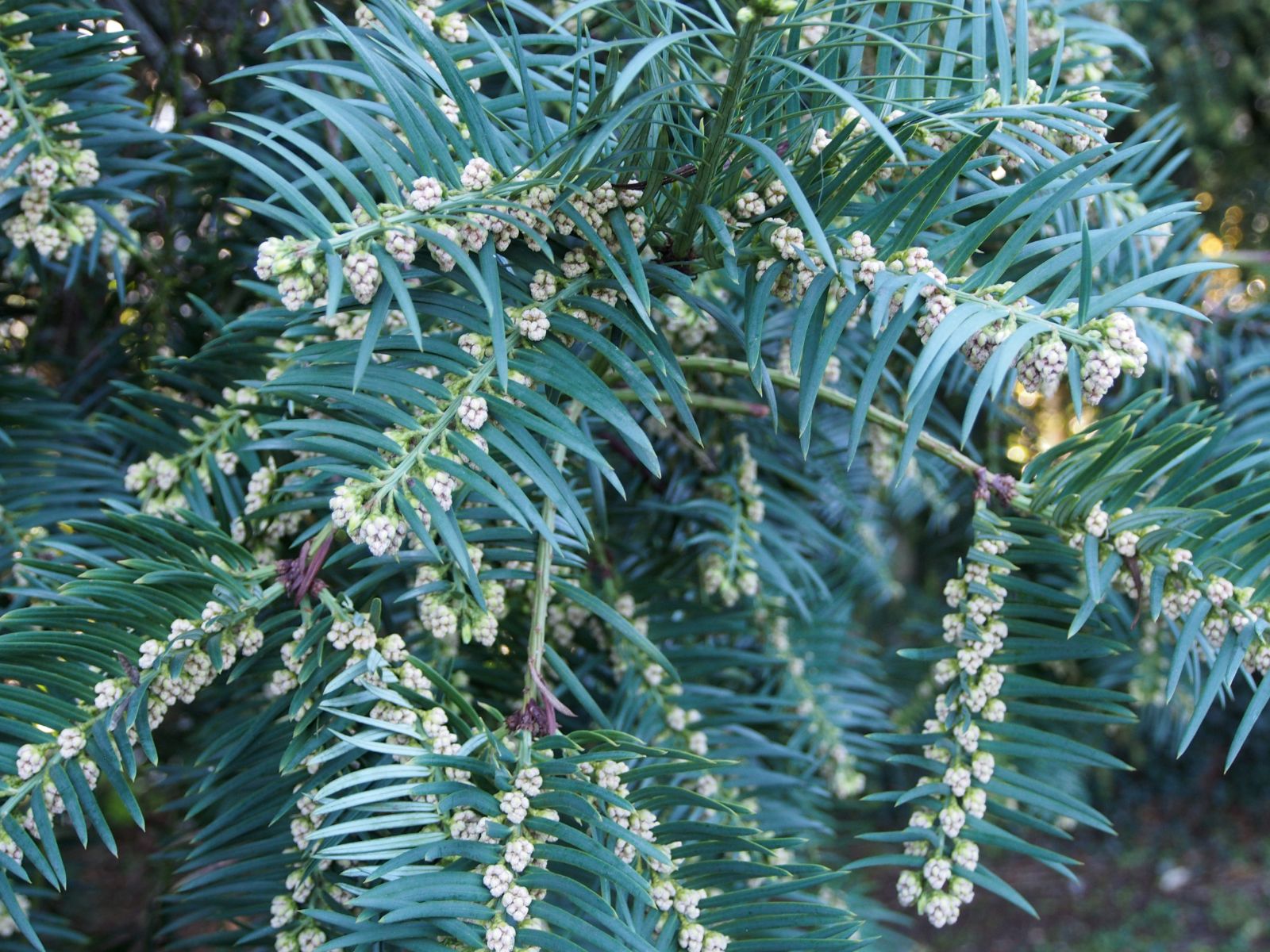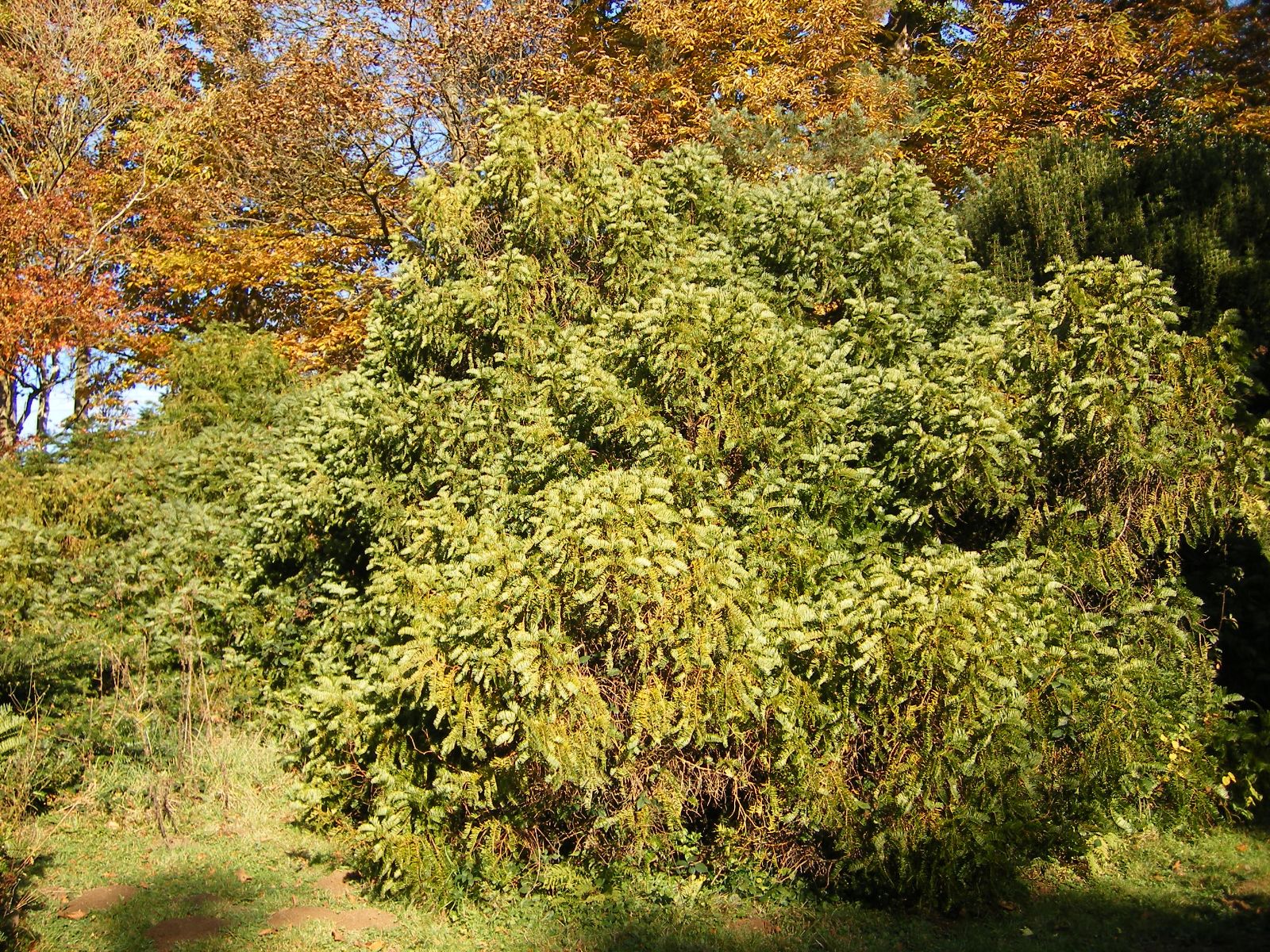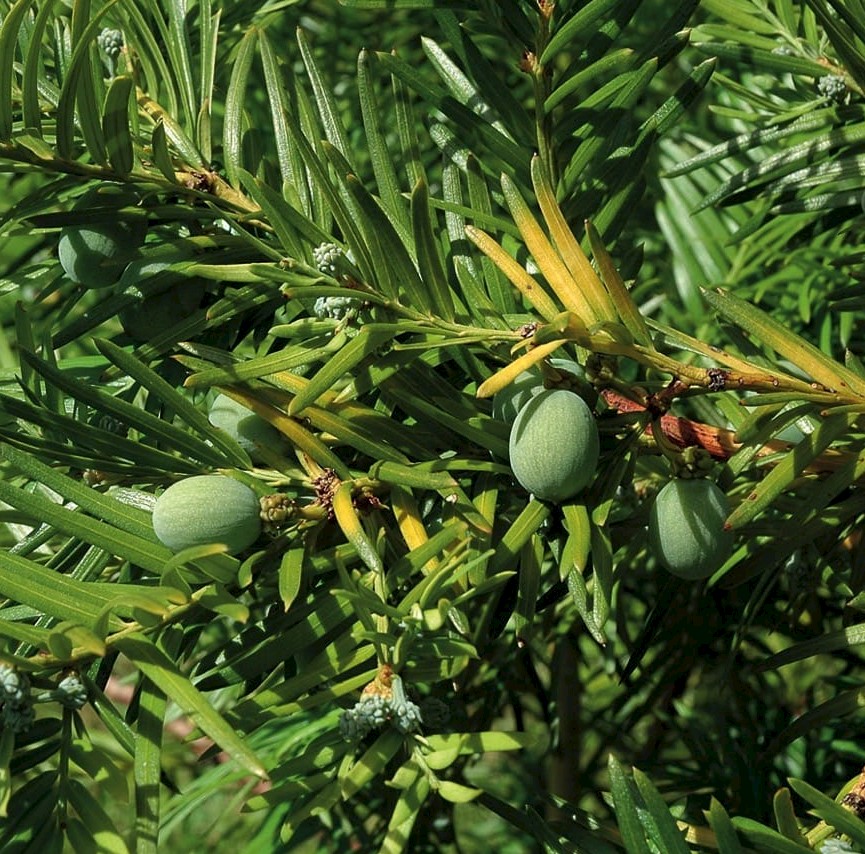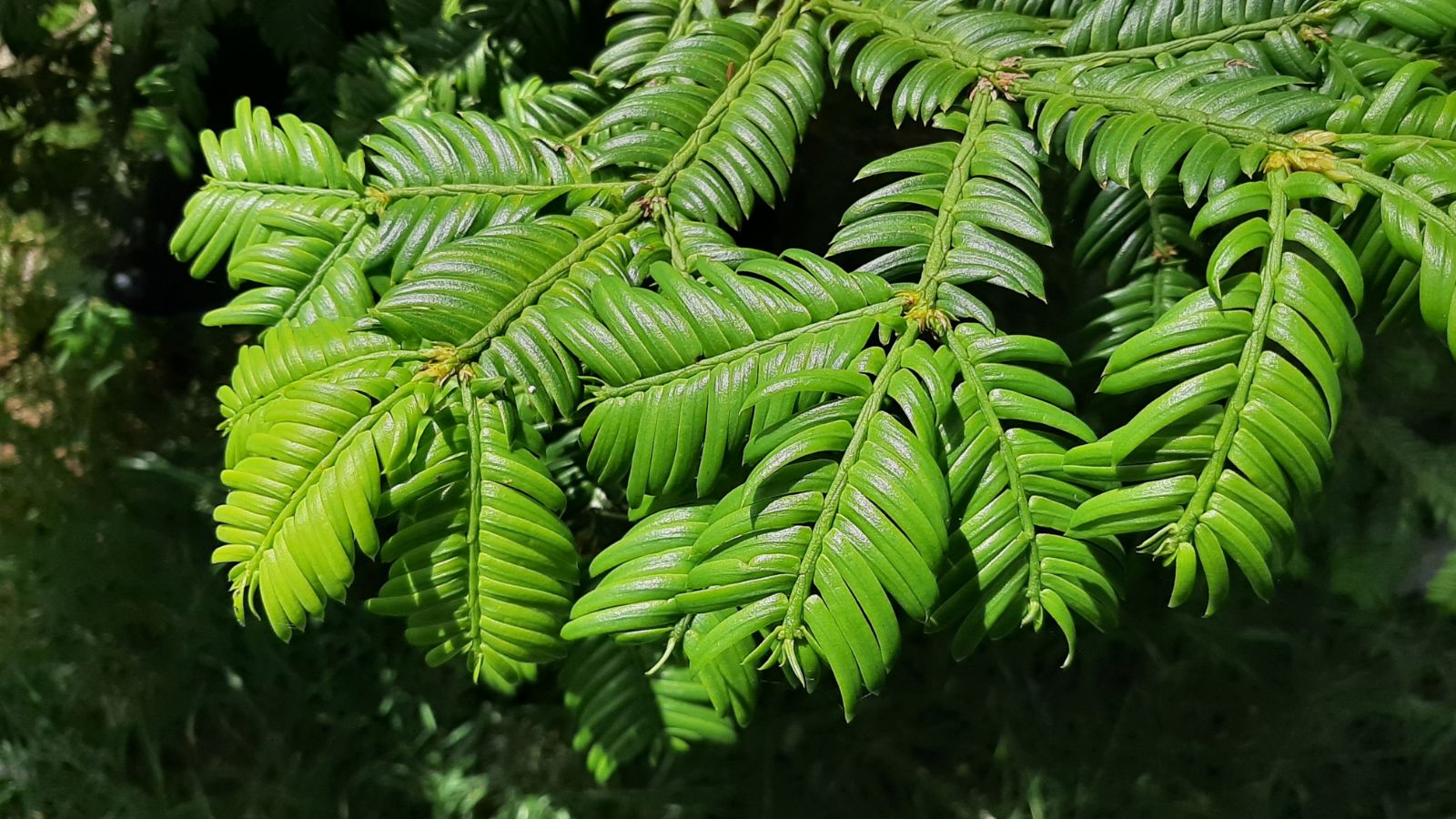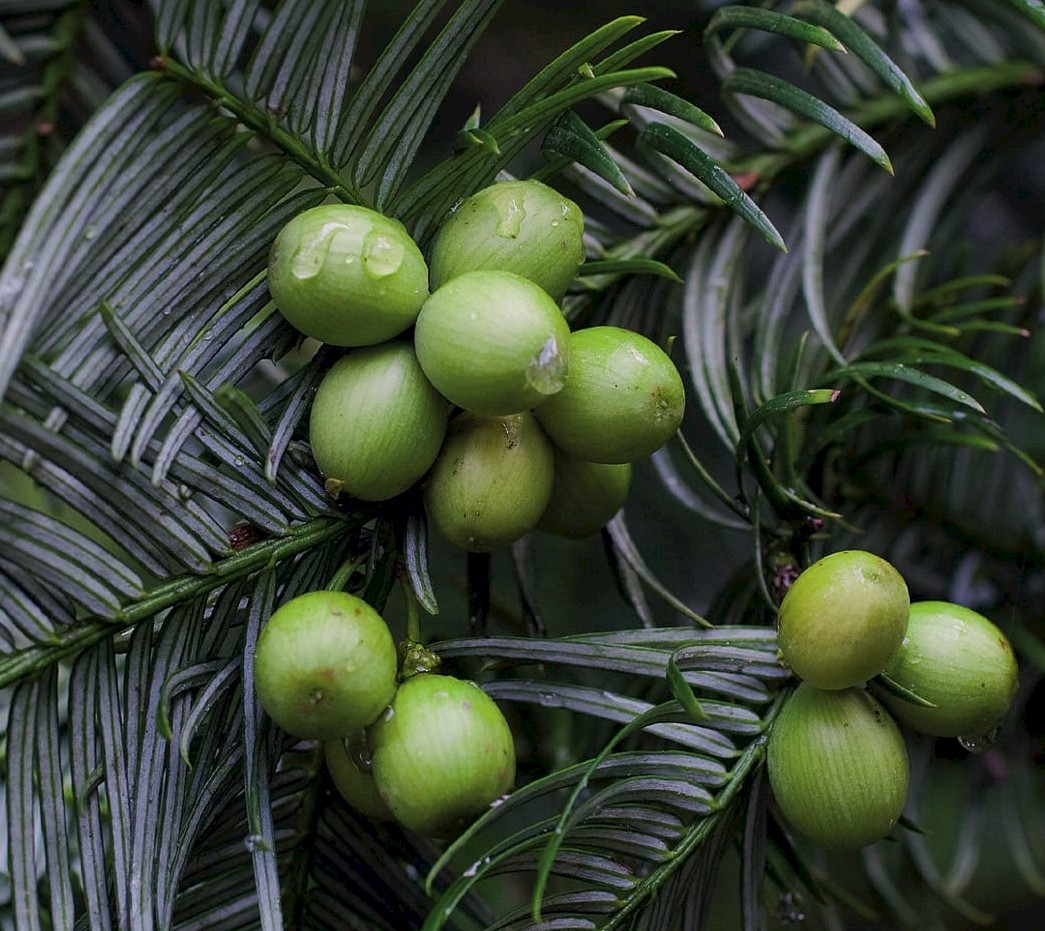Cephalotaxus
Credits
Article from Bean's Trees and Shrubs Hardy in the British Isles
Article from New Trees by John Grimshaw & Ross Bayton
Recommended citation
'Cephalotaxus' from the website Trees and Shrubs Online (treesandshrubsonline.
Family
- Cephalotaxaceae
Common Names
- Plum Yews
The taxonomy of Cephalotaxus is challenging and lacks a modern revision, though Farjon (2001) recognises 11 species. The genus is native to eastern Asia, from Assam through China to Korea and Japan in the east and Vietnam, Thailand, Peninsular Malaysia and Taiwan in the south. The major difference between the plum yews and the true yews (Taxus, Taxaceae) lies in the female cones. In Cephalotaxus they are composed of multiple decussate bracts, each of which bears two ovules; typically, only one to two ovules develop per cone, and these are completely surrounded by a fleshy, drupe-like aril (the ‘plum’). In Taxus there is only one fertile bract with one ovule, and this is only partially covered by a cup-like aril. The staminate strobili of Taxus are solitary, while in Cephalotaxus they are grouped in a capitulum or head (the generic name translates as ‘head yew’). There has been considerable debate as to whether to recognise the Cephalotaxaceae as a separate family, though this is supported by DNA-based studies (Cheng et al. 2000, Wang et al. 2001). Plum yews are small, multistemmed (rarely single-stemmed), evergreen trees or shrubs. The bark is smooth and reddish brown, but later becomes fibrous or scaly. The crown is typically broad and rounded or flat-topped in European and North American gardens, though both C. fortunei and C. harringtonii can form small, open trees in warmer areas. The branches are opposite or in whorls. The apical buds are ovate and covered in persistent, imbricate scales. The needle-like leaves are arranged spirally on terminal branchlets and in two ranks on lateral branchlets. In most species, the branchlets are dorsiventrally flattened, with a prominent adaxial V-shaped channel between the two ranks of leaves. The leaves are dark green, linear-lanceolate and with two abaxial glaucous-green bands of stomata separated by a conspicuous midrib. Within each of the two bands, the stomata are arranged in several rows. Cephalotaxus species are usually dioecious, but can be (rarely) monoecious. The male strobili develop along the previous season’s growth and are clustered into capitula. The capitula are solitary, axillary and partially sessile or pedunculate; where present, the peduncle bears several scales or is naked. The female cones are borne in groups (rarely solitary) at the base of the previous year’s growth and mature in the second year. The cones are pendent, pedunculate and formed from several decussate bracts, each of which bears one to two erect ovules. Typically, only one ovule matures per cone, and the resulting seed has a thin, hard shell. The entire seed is enclosed in a fleshy aril, which changes from green to purplish red. The resulting structure resembles a drupe such as that of an olive. The seed (rarely two seeds develop) is ovoid to globose and wingless (Li & Keng 1994b, Tripp 1995, Fu et al. 1999a). The species of Cephalotaxus are rather difficult to separate, and commonly cited characters such as bark colour, needle shape and length are all influenced by the age of the plant and the environment in which it grows; specimens without an accurate provenance may be unidentifiable (Tripp 1995). Michael Dirr’s pertinent comment (Dirr 1998), on trying to find a reliable way to distinguish the species – that ‘life is too short for such frustration’ – is very apt. The Japanese C. harringtonii and the Chinese C. fortunei represent the extremes of morphological variation in the genus.
Cephalotaxus is a genus where it is quite fair to say that the more recently introduced or less familiar taxa have no apparent horticultural advantages over the familiar species C. fortunei and C. harringtonii and their selections. All seem to make the same sort of sprawly, somewhat ill-defined shrubby tree. Cephalotaxus appears to enjoy summer heat, and in the southeastern United States C. harringtonii is an important landscaping species, used as a substitute for Taxus, and numerous cultivars have been selected (Dirr 1998). All species seem fairly tolerant of soil types. As with Taxus, they would seem to be understorey plants when young, and there is no doubt that they look much happier when not exposed to sun.
Bean’s Trees and Shrubs
Cephalotaxus
A group of small evergreen trees and shrubs, all natives of E. Asia. They resemble the yews in the shape and general disposition of the foliage but most botanists consider them distinct enough to rank as a separate family – the Cephalotaxaceae. They have erect stems, from which the branches are borne in tiers, whilst the branchlets are both alternate and opposite. Flowers unisexual, the sexes nearly always on separate plants. Male flowers composed of four to six stamens, enclosed in a bract, produced in April and May in the axils of the leaves of the previous year’s growth, and arranged in clusters of small globose heads. Female flowers composed of pairs of carpels in the axils of scales at the base of the branchlets. Fruits (seeds) olive-like with a fleshy coat surrounding an almond-shaped resinous kernel (seed). The members of this genus bear a considerable resemblance to the torreyas, but differ in the leaves being soft rather than prickly pointed, and in the flowers being crowded instead of solitary in each leaf-axil. Another point of difference is that in the torreyas the stomata are arranged in narrow sunken bands.
In gardens the species of Cephalotaxus are useful evergreens, especially for semi-shaded places, where they thrive better than in full sunshine. All those mentioned below are hardy and can be increased by cuttings, although seed should be preferred if obtainable. Female trees will sometimes develop fruit and infertile seed in the absence of pollen.

